|
CHROMATOGRAPHIC PATTERNS OF FREE AMINO
ACIDS IN BIVALVES OF ECONOMIC IMPORTANCE FROM THE MEXICAN COASTS
Trabajo
recibido el 6 de noviembre de 1985 y aceptado para su publicación el 11
de marzo de 1986
Faustino Rodríguez Romero
Gerardo Campos Polito
Alfredo Laguarda-Figueras
Universidad Nacional
Autónoma de México. Instituto de Ciencias del Mar y
Limnología. Contribución 419 del Instituto de Ciencias del Mar y
Limnología
Se estudio la expresión
cromatográfica de los aminoácidos libres y polipéptidos
pequeños de poblaciones de moluscos de los géneros
Crassostrea Ostrea e Isognomon, a partir de extractos del
musculo abductor con el fin de caracterizar sus patrones por medio del
análisis cualitativo de los cromatogramas. Sé exáminaron
organismos de las especies Crassostrea virginica, C. rhizophorae, C.
corteziensis, Ostrea equestris y Isognomon alatus originarios de
diferentes localidades de las costas Mexicanas. Los patrones
cromatográficos a nivel específico mostraron diferencias en
número y disposición de las bandas, así como en los
factores de corrimiento. Se concluye que este procedimiento puede ser de
utilidad en la identificación de especies en las familias Ostreidae e
Isognomonidae aqui presentadas.
Mollusk
populations of the genera Crassostrea, Ostrea and Isognomon
were studied in their chromatographic expression of free amino acids and small
polypeptides of the abductor muscle with the purpose of characterizing their
patterns by means of a qualitative analysis. Crassostrea virginica, C.
rhizophorae, C. corteziensis, Ostrea equestris and Isognomon alatus
were examined from different localities of the mexican coasts. The specific
chromatographic pattems showed differences in number, disposition of bands and
Rfs. It is concluded that this technique can be usefull in identification of
species in the families Ostreidae and Isognomonidae here studied
It has been estimated that there are 1.5 x lo 6 hectares of estuarine waters and 12,555 km 2 of aquatic surface within the 125 coastal lagoons in the Mexican coasts. These environments have been considered for aquaculture purposes as one of the most productive areas for exploitation of the biotic aquatic resources. For example, some estuarine commercial mollusks belonging to the class Bivalvia as oysters, clams and mussels. Oysters are a high1y commercials organisms whose uncertain and conflictive taxonorny persists, due to external polymorphism of shells perhaps as a consequence of environmental in teractions (Galtsoof, 1964). In the Ostreidae family, a closely parental relation among species of the Genus Crassostrea, has been corroborated, it is based on anatomical, physiological and cytogenetic features (Nelson, 1938; Loosanoff and Nomejko, 1951; Menzel, 1968a, b; Ahmed, 1967; Rodríguez-Romero et al., 1979a, b). At the intraspccific level physiological races, have been identified as ecotypes direaly related to the environment (Stauber, 1947; Loosanoff and Nomejko, 1951). These variants in the populations can not be quantifies easily by means of the cytotaxonomy criteria since standard karyotypes in Crassostrea do not differ enough to be easily descriminated (Rodríguez - Romero, 1981). Nowadays, apropiate procedures to cuantify intra and interspecific variations, includes electrophoretic and chromatographic techniques focused on biochemical genetics are in use. Hillman (1964), contributed valuable information by the chromatographic analysis of free aminoacids from the abductor muscle of Crassostrea virginica. Sice the development of electrophoresis, many studies have published data concerning the genetic expression and variability in oysters (Cheng, 1964; Numachi, 1962; More et al., 1971 a, b; Wilkins and Mathers, 1973; Fujino and Nagayama, 1977; Torigoe, 1978 and Buroker el al., 1983). However, an easy and inexpensive technique to identify these species and their populations for prospective fisheries, seems still a far-reaching objetive. The aim of this paper is to report the study of the chromatographic patterns of abductor muscle free aminoacids in bivalves of five bivalve species, in order to evaluate their potential use as auxiliary indicators for the identification of oysters species. MATERIAL AND METHODS
COLLECTOrganisms analysed were collected in Spring of 1980 from locations along the Mexican coasts. Crasssotrea virginica, from Boca de Atasta, Laguna de Términos, Campeche and Laguna El Carmen, Sánchez-Magallanes, Tabasco; Crassostrea rizophorae from Estero Pargo, Isla del Carmen, Campeche; Crassostrea corteziensis from Estero de Teacapán, Sinaloa and Estero del Pozo, San Blas, Nayarit; Ostrea equestris from El Carmen y Machona Lagoons, Sánchez-Magallanes, Tabasco and Isognonion alatus from Jaina island, Campeche (Fig. l). Taxonomic identification of these mollusks was performed in the malacology laboratory of the Instituto de Ciencias del Mar y Limnología, University of México (UNAM). DISSECTIONTen specimens of each population were analysed, except for Ostrea equestris (four specimens). Dissections were made to obtain semitrasparent abductor muscle. The samples were macerated in ethanol-distilled water solution 3:1, to liberate free aminoacids. Chromatograms were funneled using a butanol: acetic acid: distilled water system (60:15:25) for 16 hours on Whatman # 3 paper. A concentration of 25 microliters per sample was obtained and each one revealed with a solution of ninhidrina (2.5 g)-isatina (0.95 g)-lutidina (10 m1) solved in 1,000 ml of acetona. Chromatograms were photographed; running fáctors (Rfs) calculated, compared and fixed with a 6.5 % w/v nickel sulphate solution. 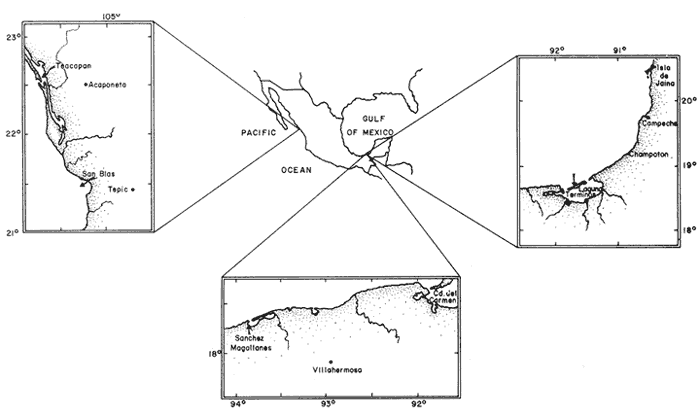 Figure 1. locations of the sampling areas in the mexican coasts RESULTSFree aminoacids of abductor muscle chroma-tographic petterns of three species of Crassostrea: C. virginica, C. rhizophorae and C. corteziensis and one species of the genus Ostrea: O. equestris and Isognomon: L alatus were typified (Figs. 2A-F). Crassostrea corteziensis Hertlein, 1951; seven bands were settled on this species (Figs. 2A, B). Crasssotrea virginica Gmelin, 1791; the chromatographic pattern of this species, has presented six well defined bands with consisten Rfs (Figs. 2C, D). Crassostrea rhizophorae Guilding, 1828; the chrornatographic analysis of this species has - shown six bands (Figs. 2e, F). Ostrea equestris Say, 1834; six bands were settled on this species (Figs. 3A, B). Isognomon alatus Gmelin, 1791.; the chrornatographic pattern of this species is very different to Ostrea and Crassostrea species, it presented only four bands (Figs. 3C, D). 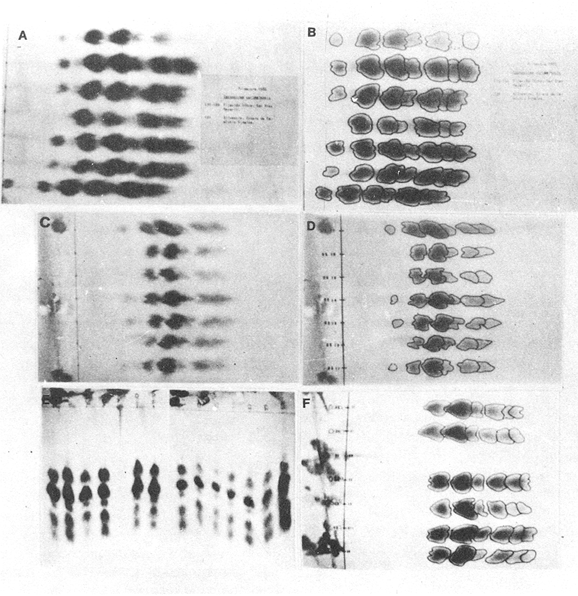 Figure 2. Chromatograms of free aminoacids. A-B Crassostrea cortesiensis, C-D Crassostrea virginica, E-F Crassostrea rhizophorae 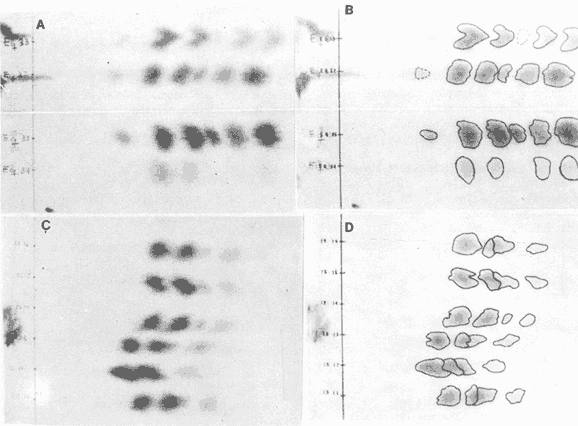 Figure 3. Chromatograms of free aminoacids. A-B Ostrea eque stris, C-D Isognomon alatus DISCUSSION AND CONCLUSIONSBiochemistry techniques in the study of phylogeny and taxonomy of plants and animals are strongly used at present. Although, in bivalves much work must be done; as to oysters, some studies have been published using chromatography (Hillman, 1964), electrophoresis (Fujino and Nagayama, 1977; Wilkins and Mathers, 1973; Torigoe, 1978; Buroker, 1983), and serology (Cheng, 1964 and Numachi, 1962) as a useful criteria on taxonomy and systematics of the family Ostreidae. Remarking electrophoresis like an adequate technique in the study of genetic expression and its relation with genetic variability, adaptative evolution and phylogeny. However it is a difficult technique, in countries whose acces to imported materials is restricted, these some countries offen have urgent necessities of a fast discrimination of species and population of extensive aquaculture organisms. Consequetly, a cheap and easy procedure should be developed for application by mariculture technicians. CHROMATOGRAPHIC PATTERS
Crasssotrea Virginica This american oyster has been studied in many aspects of its taxonomy, biology, anatomy, physiology and ecology (Nelson, 1938; Loosanoff and Davis, 1963; Galtsoof, 1964; Ransom, 1945; Forbes, 1967 and Menzel, 1973). In these studies the taxonomic value of the promial chamber and morphology of larval stages has been pointed up in Crassostrea. Unfortunately, these studies have been frequently ignored because the most common criteria in malacology is based in conch external features; this often means a limited criterion for taxonomic position of natural populations. C. virginica taxonomic position has been discuted by Gunter (1951) and Galtsoof (1964), based on conchological characteristics and internal anatomy, however, uncertainty has prevailed in identification of populations from localities reported by Stauber (1947). Hellman (1964), has demostrated differences at aminoacids level between two populations of C. virginica from distinct localities and quite different environments. Chromatographies of our study have shown six bands (Table l). 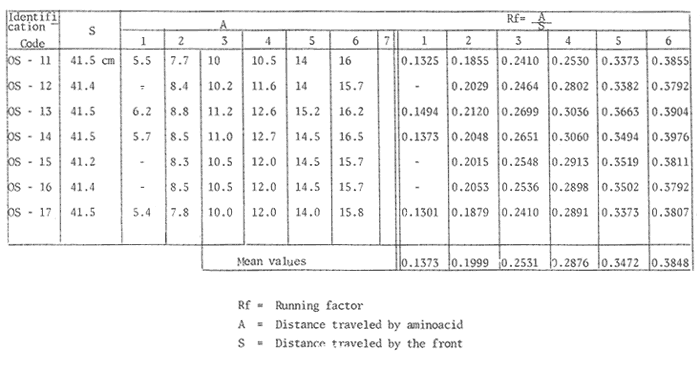 TABLE 1 RUNNING FACTORS CRASSOTREA VIRGINICA FROM LAGUNA LA MACHONA SÁNCHEZ MAGALLANNES, TABASCO Crasssotrea rhizophorae Populations of C. rhizophorae have been found along Caribbean coasts like Cuba, Brazil and Venezuela. Most related studies have reported different scientific names for this species leading to taxonomic and systematic mistakes within Crassostrea Genus (Mattox, 1949 and Bonilla-Ruiz, 1969). As seen above with C. virginica, C. rhizophorae has been confused from its correct determination, mainly due to its morphological variations, which have not permitted a clear species description. By the internal anatomy oyster studies have described two weIl remarked Genera: Ostrea and Crassostrea. At the cytologyc level, chromosome features have been used to identify species of Crassostrea (Ahmed and Sparks, 1967a, b; LongweIl et al., 1967; Menzel, 1968a, b; Rodríguez-Romero, 1979a, b), but karyotypes do not present enough differences to descriminate species easily. The C. rliizophorae oysters from Estero Pargo, presented six aminoacids bands. Comparison of the Rfs of C. virginica and C. rhizophorae reflects no correspondence between them (Table 2). This lets infer that C. rhizophorae chromatographic pattern, can be used to discern about these two species. Crasssotrea corteziensis Populations of C. corteziensis have been erroneusly identified as a consequence of external polymorphism and frequently named Ostrea chilensis. Hertlein (1951), had found enough evidence on morphological features of oysters from Sonora, México and described them like a new species: Crassostrea corteziensis Stuardo and Martínez (1975) and Castillo (1977), based on anatomical features have determined it as Crassostrea corteziensis. Afterward cytogenetic and cytotaxonomic studies on caryotypes of C. virginica and C. corteziensis have expounded similar. In spite of the similar Rfs (Table 3), main values from both species; C. corteziensis have shown seven bands, that is an evidence to descrimate C. corteziensis from C. virginica like different species. 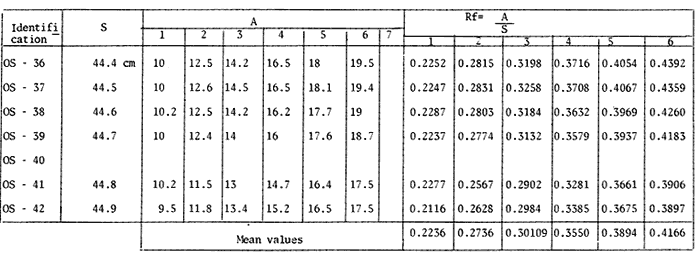 TABLE 2 RUNNING FACTORS OF CRASSOSTREA RIZOPHORAE FROM ISLA DEL CARMEN, CAMPECHE By comparing the three species of Crassostrea it is found enough differences to descriminate them by means of their chromatographic patterns, (Fig. 4). 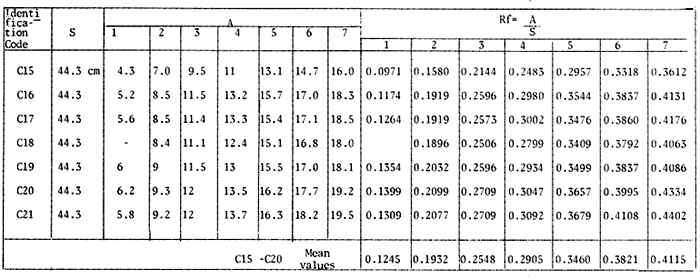 TABLE 3 RUNNING FACTORS CRASSOSTREA CORTEZIENSIS. C15 - C20 FROM SAN BLAS, NAYARIT Ostrea equestris At the point of view of general morphology criteria, the existence of Crassostrea has been accepted, taxonomically separated of Ostrea (Menzel, 1956 and Forbes, 1967). Ostrea equestris Rfs values are uniform (Table 4) by chromatograms comparison with C. virginica and C. rhizophorae, the first four aminoacid bands were similar; the other two bands between these two species remarked the main difference at generic level.  Figure 4 . Comparative curves of the animo acids patters of Crassostrea, Ostrea and Isognomon genera.  TABLE 4 RUNNING FACTORS OF OSTREA EQUESTRIS FROM LAGUNA DE LA MACHONA, SANCHEZ MAGALLANES, TABASCO. Isognomon alatus One relevant description from the Genus Isognomon was made by Yongue (1968), his work described forms and habitat of Isognomon isognomon in comparison with species of the Genus Malleus. Papers about cytotaxonomy from genus Isognomon (Wada, 1978; Rodríguez-Romero, 1983; Durán, 1984), reported 28 and 26 diploid chromosomie numbers for I. alatus. Four bands were found in chromatograms and a well differentiated Rfs pattern in comparison with both genera: Ostrea and Crassostrea (Table 5). These findings agree to other results (Menzel, 1956) on recognition of phylogenetic differences among the species under study. Due to results here obtained, it is conclude that chromatographic patterns can be considered of some utility in identification of the molluscan organisms here studied. Likewise, it is attractive to continue these studies with some chromatographic variations, in order to improve reproductive results and a cheap technical process. 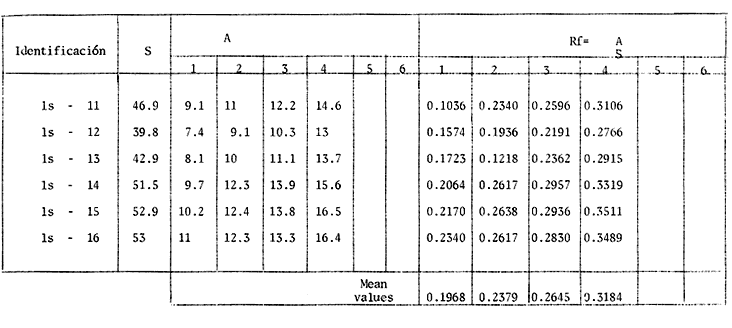 TABLE 5 RUNNING FACTORS OF ISOGNOMON ALATUS FROM ISLA DE JAINA, CAMPECHE AgradecimientosThe authors wish to thank Antonio García-Cubas who helped identification of the bivalves. We also thank M. Diupotex and A. Durán for their he1p in technical aspects. LITERATURAAHMED, M. and A. K SPARKS, Chromosomes of oysters, clams and mussels. Proc. Nat. Shelfish. Ass., 1967. 10. 53: AHMED, M. and A. K. SPARKS, A preliminary study of two species of oysters (Ostrea lurida and Crassostrea gigas). J. Fish. Res. Board. Can., 1967. 2155-2159. 24: BONILLA-RUIZ, J., Lagena, Notas sobre aspectos biológicos de las ostras. 1969. 48-68. 23 y 24: BUROKER, N. E., Mar. Biol., Populations genetics of the american oyster Crasssotrea virginica along the Atlantic coast and the Gulf of México. 1983. 99-112. 75: CASTILLO R, Z. G., Tesis Prof. Biología. Contribución al estudio taxonómico de algunas especies mexicanas de la familia Ostreidae. Fac. Ciencias, Univ. Nal. Autón. México. 1977. 108 p. CHENG, T. C., Taxonomic, Biochemistry and Serology. Comparative Electrophoretic Studies on the Sera of Marine and Freshwater Mollusks. Leone Ronald Press (ed.), New York: 1964. 659-667. DURÁN G., A., F. RODRÍGUEZ-ROMERO and A. LAGUARDAFIGUERAS, Malacological Review., Polimorphisme chromosomique et numero diploide dans une population de Isognomon alatus. 1984. 85-92. 17: FORBES, M. L., Bull. Generic differences in prodissconchs of Gulf of Mexico oysters. Mar. Sci., 1967. 338-347. 17 (2): FUGINO, K. and N. NAGAYAMA, Bull. Biochemical polymorphism in the pacific oysters. Variants in myogen and esterasses. Jap. Soc. Sci. Fish., 1977. 983-988. 48 (8): GALTSOFF, P. S., Fish. Bull. The american oyster Crasssotrea virginica Gmelin. Fish. Wildi. Serv., 1964. 64: 480. GUNTER, G., Science, The west indian three oyster on the Louisiana coast, and notes on the grow of Gulf coast oyster. 1951. 516-517. 113: HILLMAN, R. F., Syst. Zool., Chromatographic evidence of intraspecific genetic differences in the eastern oyster Crasssotrea virginica. 1964. 12-18. 13: LONGWELL, A. A., S.S. STILES and D. G. SMITH, Chromosome complement of the american oyster Crasssotrea virginica, as seen in meiotic and cleaving eggs. Can. J. Genet. Cytol., 1967. 845-846. 9: LOOSANOFF, V. L. and C. A. NOMEJKO, Biol. Bull. (Woods Hole), Existence of physiologically different races of oysters Crasssotrea virginica. 1951. 151-156. 101 (2): LOOSANOFF, V. L. and H. C. DAVIS, Recent Advances in Marine Biology. Rearing of bivalve mollusks. In: Acad. Press, New York: 1963. 1-136. MATTOX, N. T., Ecol. Monogr., Studies on the biology of the edible oyster Ostrea rhizophorae Guilding, in Puerto Rico. 1949. 339-356. 19: MENZEL, R. W., Some aditional differences between Crasssotrea virginica and Ostrea equestris in the Gulf of México area. Proc. Nat. Shellfish Assoc., 1956. 76-81. 46: MENZEL, R. W., Cytotaxonomy of species of clams mercenaria and oysters (Crassostrea). Proc. Symp. Mollusca Mar. Biol. Assoc. India. 1968a. 75-84. Part 1: MENZEL, R. W., Nautilus, Chromosome number in nine families of pelecypod mollusks. 1968b. 45-63. 82 (2): MENZEL, R. W., Bull. Some species affinities in the oyster genus Crassostrea. Amer, Malacol. Union Inc., 1973. 38. MORE, P., T. MORE, J. POISEBAI and R. MONNET, Electrophorése en gel de polyacrydamide des protéines solubles de la partie transparente du muscle abducteur de eing spéces d'Ostreidae. C.R. Hebd. Sence Acad. Sci. Ser. D. Sci. Nat. (Paris), 1971a. 222-225. 272 (2): MORE, P., T. MORE, J. POISEBAI and R- MONNET, Electrophorése en gel de polyacrylamide des protéines solubles de la partie transparente du muscle abducteur de eing spéces d'Ostreidae. C.R. Hebd. Sence Acad. Sei. Ser. D. Sci. Nat. (Paris), 1971b. 904-906. 272 (10): NELSON, T. C., The feeding mechanism of the oyster. I. On the pallium and the branchial chambers of Ostrea virginica, O. edulis and O. angulata, with comparisons with other species of genus. Jour. Morphology, 1938. 1-161. 63 (1): NUMACHI, Y., American Naturalist, Serological studies of species and races in oysters. 1962. 211-217. 96 (889): RANSON, G., Bull. Prodissoconques et classification des Ostreides vivants. Mus. Roy. d'Hist. Nat. Belgique, 1948. 1-12. 42: RODRÍGUEZ-ROMERO, F., Tesis Doctoral. Estudios cromosómicos y de expresión genética en moluscos de importancia económica de las costas mexicanas. Fac. Ciencias. Univ. Nal. Autón. México. 1981. 121 p. RODRÍGUEZ-ROMERO, F., Can. J. Genet. Cytol., The karyotype of Isognomon alatus. 1983. 85-87. 25 (2): RODRÍGUEZ-ROMERO, F. and A. LAGUARDA-FIGUERAS, Bull. The chromosomic pericentric inversions as an adaptative mechanism in the karyotype of three species of Crassostrea (abstract). Amer. Malac. Union Inc., 1979: 1979b. 65. RODRÍGUEZ-ROMERO, F., A. LAGUARDA-FIGUERAS and M. URIBE, An. Centro Cienc. del Mar y Limnol. Comparative analysis of the kariotype of two oyster species of the genus Crassostrea from México: C. virginica and C. corteziensis. Univ. Nal. Autón. México, 1979a. 19-24. 6 (1): STAUBER, L. A., On the possible physiological species in the oyster Ostrea virginica. (abstract). Anat. Rec., 1947. 99 59. (4): STUARDO, J. and A. MARTÍNEZ, An. Centro Cienc. del Mar y Limnol. Relación entre algunos factores ecológicos y la biología de poblaciones de Crassostrea corteziensis Hertlein, 1951, de San Blas, Nayarit, México. Univ. Nal. Autón. México, 1975. 89-129. 2 (1): TORIGOE, K ., Electrophoretic variants of abductor muscle proteins in Crassostrea gigas. Jap. Jour. Malac. (Venus), 1978. 241-244. 37 (4): WADA, K. T., Bull., Chromosome karyotypes of three bivalves: the oysters Isognomon alatus and Punctada imbricata and the bay scallop Argopecten irradians. Biol. 1978. 235-245. 155: WILKINS, N. P. and N. F. MATHERS, Anim. Blood Grups. Biochem. Enzime polymorphisme in the european oyster, Ostrea edulis L. Genet., 1973. 41-47. 4: YONGE, C. M., Bull., Form and habitat in species of Malleus (including the hammer oysters) with comparative observations of Isognomon isognomon. Biol. 1968. 378-405. 132 (2):
|

